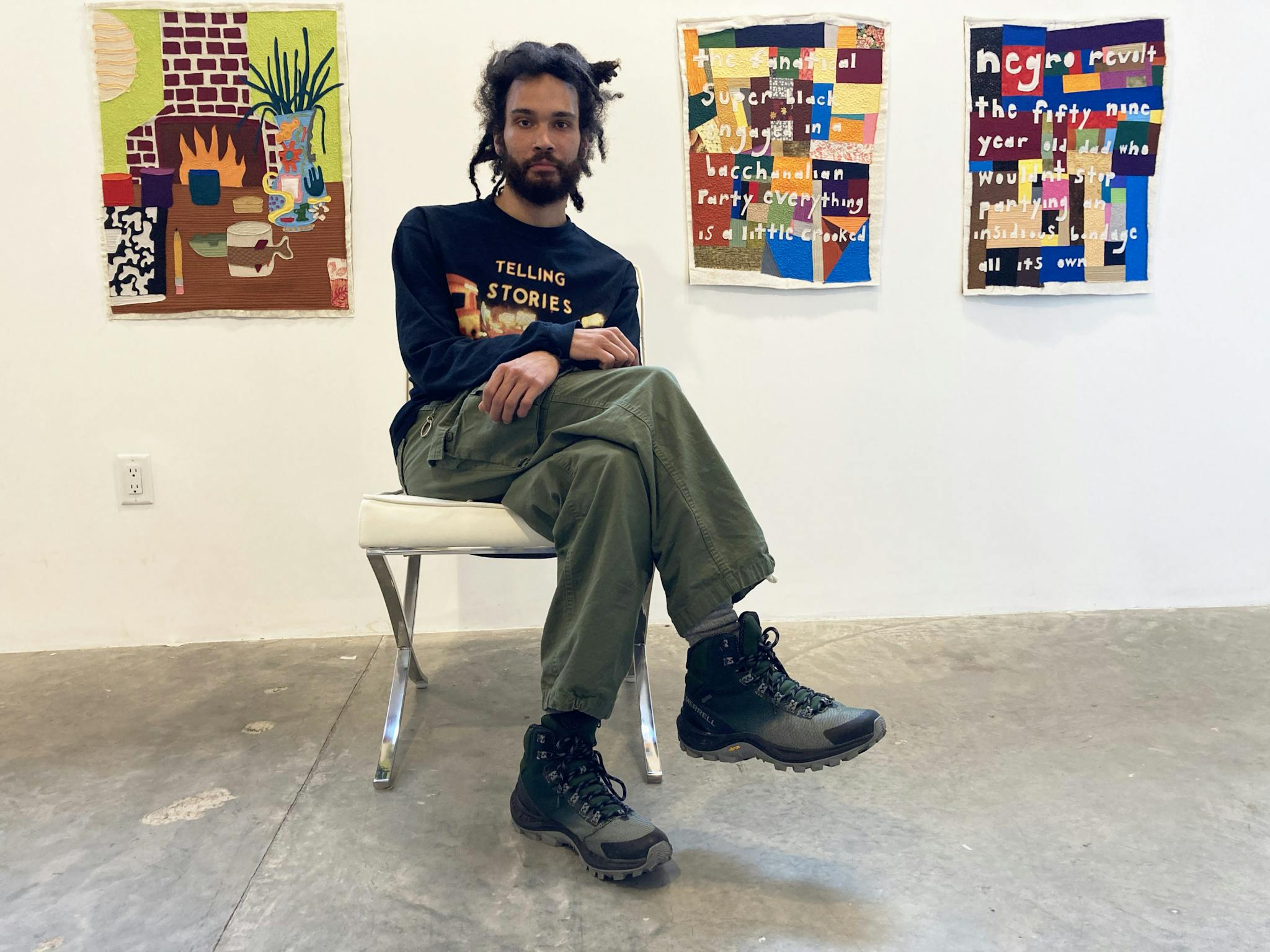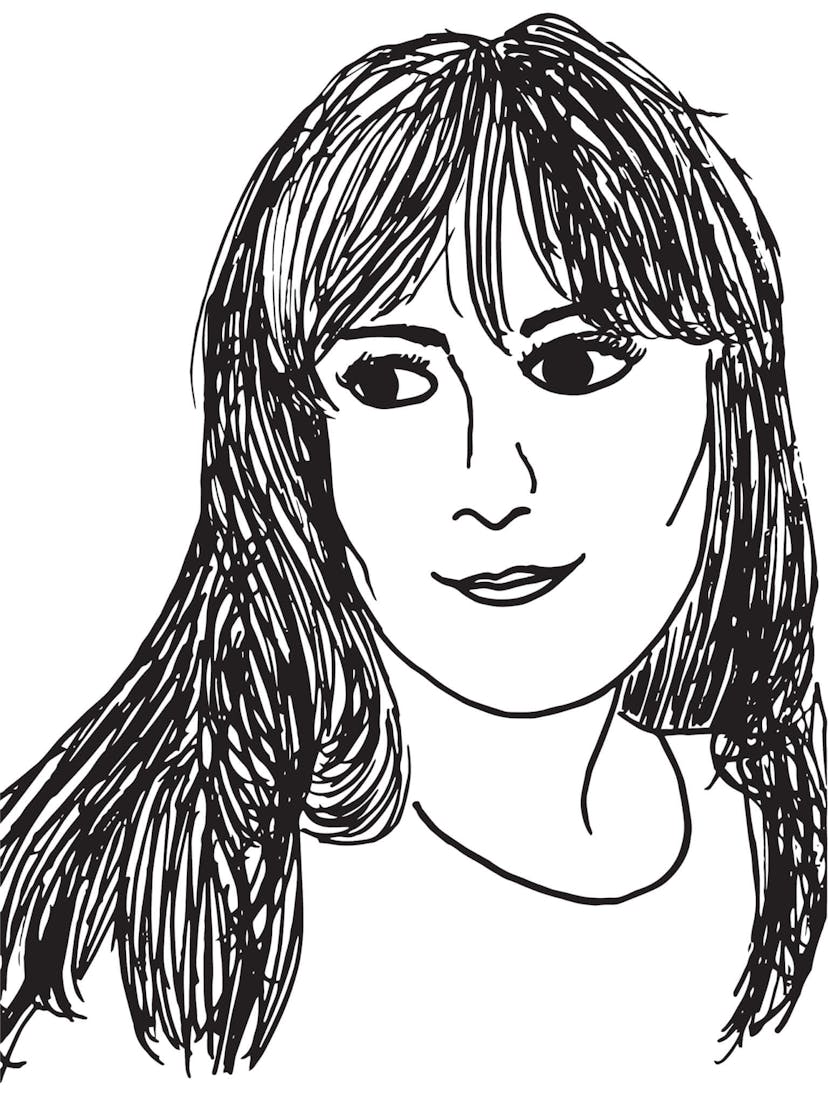At his first solo exhibition, Michael C. Thorpe is boldly pulling on the threads of a centuries-old craft—and it’s paying off. “Meandering Thoughts,” which has been on view at one of SoWa’s newest galleries, LaiSun Keane, presents a series of quilts depicting interiors, faraway landscapes, poetry, and portraiture with layered cuts of vibrant fabrics. Though he uses a relatively high-tech quilting machine, signs of his detailed handiwork, along with his memories and dreams, are woven into every piece. Despite being only a little over a year into what he calls his “real” career as an artist, Thorpe sold all eighteen pieces within the first week of the show’s opening.
Thorpe, who spent most of his life on the trajectory of being a basketball star, was surrounded by quilting from a young age. His mom filled their home with her own creations, while his aunt owned a small quilting shop in southern New Hampshire. It wasn’t until Thorpe graduated from Emerson College and left his basketball days behind that he finally picked up the knack for quilting too. Yet his approach was anything but the cut-and-shape conventions that preceded him. For Thorpe, the quilt has become a canvas for dreaming up alternate pasts and exploring potential futures.
At LaiSun Keane, Thorpe presents an impressive display of quilts that range from small textual abstractions to large-scale depictions of domestic spaces—all made within a three-month period leading up to the exhibition. Here, Thorpe plays with duality and storytelling to invite viewers down the rabbit hole of his mind. Take the title of the exhibition as an example: “Meandering” refers to the technique of stitching lines in a winding pattern across the quilt, but also to the subject-matter Thorpe presents. The works are intensely personal and possess layers of meaning that deepen upon hearing from Thorpe himself. All the while, the funky patterns and swirling thread tracks compose scenes, people, and phrases that feel welcoming, if not already familiar.
Quilting is impossible to pull apart from its Americana and craft roots. For Thorpe, being a Black man who quilts is a subversive reclamation of space and simultaneous homage to the Black women, primarily from the South, who paved the way for his own expressiveness.
I met with Thorpe the morning before his exhibition opened to the public. He is undeniably cool—with all the suaveness of a sports star and the tender honesty of someone who is deeply influenced by the women in his life. The following is an edited transcript of our conversation.
Jameson Johnson: You had your first show at All Too Human, a little over a year ago. What’s happened since then and how did this body of work come together?
Michael C. Thorpe: That show came together at the last possible moment before the pandemic really began. I picked the opening to be on Leap Day, which obviously felt like a special day. I had some momentum from that show—a few pieces sold, so I was really excited. And then the following week I lost my job due to COVID, and suddenly had all this time on my hands, so I just got busy making work.
JJ: And were people seeing the work?
MCT: Kind of. After the All Too Human show and a bit of press, my work really started to sell. I think it was partly because of white guilt, which is fine. I’m excited to have my work out in the world no matter how and why people have come to it.
JJ: That’s really interesting you could pinpoint that. Do you feel like interest in your work was tied to the protests and fervor oriented around racial justice last summer?
MCT: Absolutely. Honestly, a lot of my friends who are artists of color experienced something similar. It’s funny because I am always curious about who the people that buy my work are and why they’re interested in it—especially pieces that contend directly with being Black and that co-opt derogatory language or messaging. It’s the same feeling I have about Kara Walker’s work—who’s collecting that subject matter?
But the work has to sell. That’s how I’m making it as a full-time artist right now. Of course, I’m super grateful.
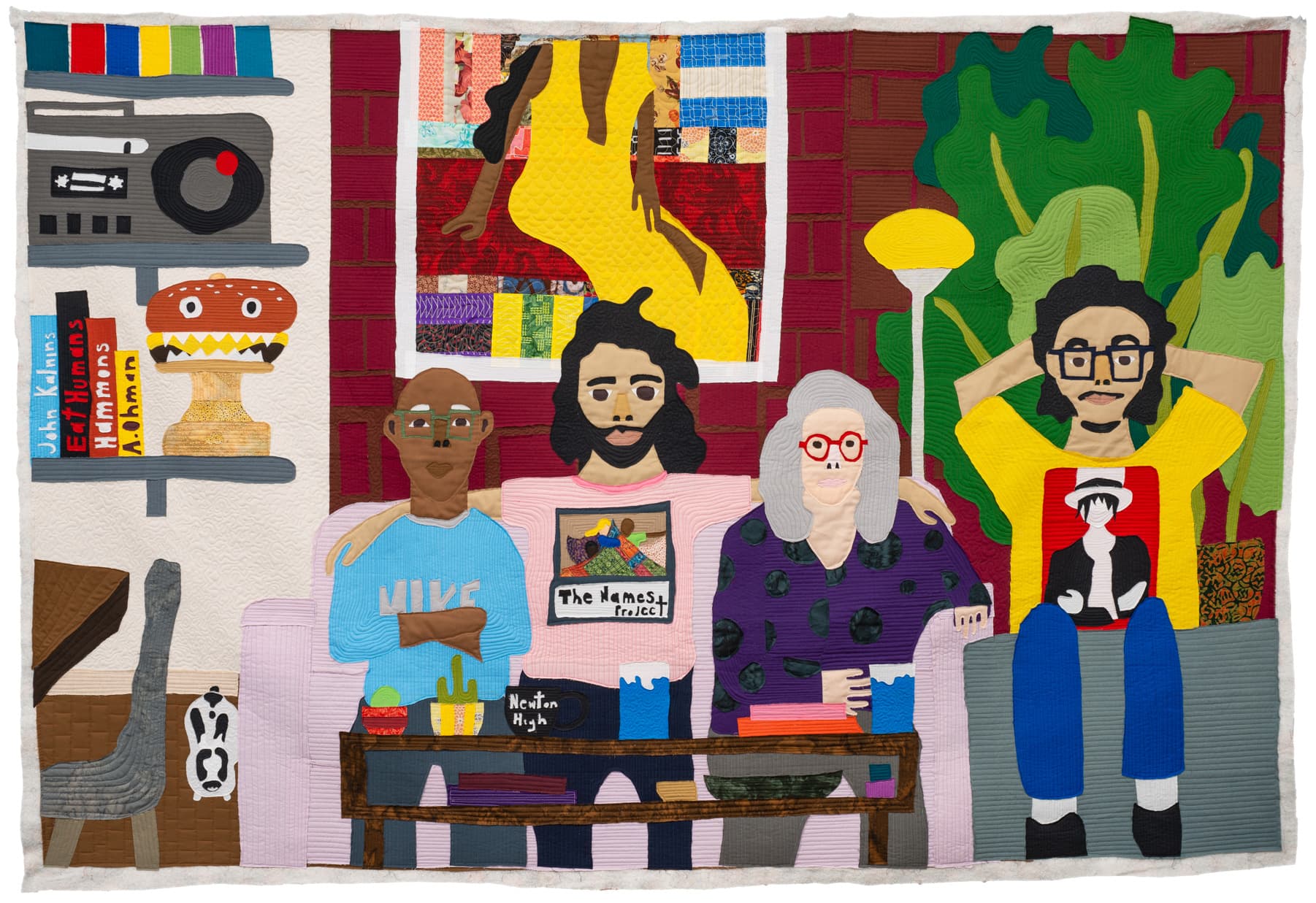
Michael C. Thorpe, Family, 2021. Fabric, quilting cotton and thread. 57.5 x 84 in (146.1 x 213.4 cm). Image courtesy of LaiSun Keane.
JJ: I’d love to talk about Family, a piece that really feels like a magnum opus—at least for this show. What were you thinking about while making this piece?
MCT: What’s funny is that the first thing I was thinking about actually wasn’t the subject matter. I was thinking about scale. I wanted people to interact with this piece differently, but also wanted to prove something about myself as an artist.
I think this is also a really good example of what I could accomplish when art became my full-time job rather than something I was doing in addition to my nine-to-five. My abilities just really blossomed when I had more time to practice and push the boundaries of what I was doing.
I was also thinking more about the background details. In my early work I would make these kind of flat backgrounds without much texture, but here I wanted to play around with making a layered scene beyond the figures.
JJ: And who are the figures here?
MCT: So this piece is a giant ‘what if.’ It shows me and my brother sitting beside my mom and my dad. But I grew up with just my mom; my dad wasn’t in the picture. So this piece is a way for me to question what it would look like if we could all get together now.
JJ: A lot of the imagery you use in your work feels extremely quotidian, like the domestic scene in Family, but of course, the name of the exhibition suggests there’s something else to be discovered in every piece. Can you tell me about your compositions?
MCT: I think of someone like Pope.L, who once said, “Artists don’t make art, they make conversation.” And that’s how I feel too. I want people who look like me, think like me, and talk like me to see work like mine and for them to just get it. I think the way people speak about art is so inaccessible. I want my art to push past that.
My trick is that I make these bright and vibrant pieces, but behind them is a whole rabbit hole of conversation topics.
JJ: The quilting machine you first started making work on was your mom’s, correct? Can you tell me about some of your family’s history with quilting and how you picked up the craft too?
MCT: My mom has always been a quilter for as long as I can remember. There are quilts on our couches and beds, but the funny thing is that she also has quilts hanging on the wall. I never really processed them as art.
2017 was a pretty pivotal year for me. I had stopped playing basketball and was also moving past photography, which was something I had studied in college. Right around the same time, my mom had purchased this massive quilting machine. I had this yearning to really start making things with my hands, and since I was living at home with her, and this machine was suddenly in our house, I was eager to give it a try.
JJ: Your mom must have been thrilled!
MCT: My mom was super encouraging when I started quilting. She was also my biggest supporter when I was playing basketball, so for her, this was just another way that we could continue to connect and spend time together.
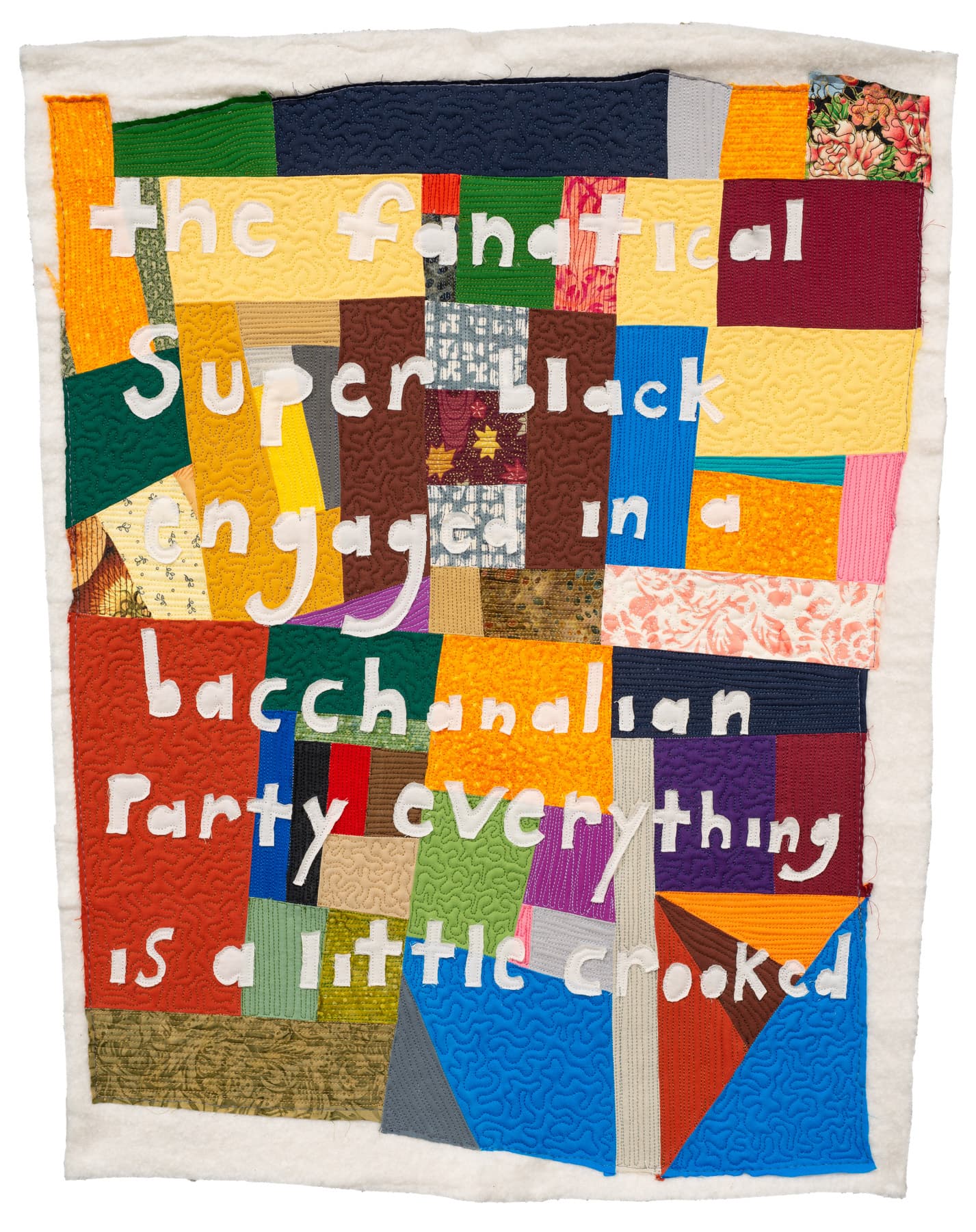
Michael C. Thorpe, The Fanatical Super Black, 2021. Fabric, quilting cotton and thread. 26 x 19.5 in (66 x 49.5 cm). Image courtesy of LaiSun Keane.
JJ: It sounds like you took to the process pretty instantly. How have you adapted this centuries-old tradition into your own practice?
MCT: I was really inspired by artists who were creating sharp work while leaving the marks of their hands. I wanted to start creating work that could be identifiably made by me.
Suddenly everything I looked at was turned into a quilt in my head. I would go to museums and look at paintings and think about how I could turn them into a quilt.
I was reading everything I could about quilting traditions, especially within Black communities, but I was simultaneously trying to learn a lot about art. I think I went through what anyone studying art history does, and I looked to the abstract and expressionist artists. It wasn’t clicking with me, so I turned to contemporary artists who work with figures and portraiture: Alex Katz, David Hockney, Henry Taylor, and others. From there I got really excited about Romare Bearden and Jacob Lawrence.
JJ: What drew you to their work?
MCT: I realized they were working with flatness. But of course, also their palettes. I really wanted to find my own voice—as an artist, but especially as someone taking on this craft that is now really occupied by white, older women. A lot of the current quilting trends rely on packaged designs. You buy a pattern, the fabric, and the thread and can make a quilt that looks exactly like what’s on the box. It’s really weird to me.
A huge turning point was when I read a book about the Gee’s Bend Quilters in Alabama, who were a group of Black women who made quilts out of found fabrics. It started out of a necessity while they were still enslaved in the 1800s, but the quilts they created had these really cool and funky patterns. Now, these quilts are finally recognized as precious works of art and artifacts.
There was also a tradition where a single quilt would be made by several different people. I felt like I was at a place in my life where I was so supported, that I was kind of carrying parts of that tradition forward.
JJ: How do you think your work is in dialogue with some of those traditions?
MCT: I think quilting still has a long way to go. I’ve always believed it can be accepted as fine art, but I knew it would be an uphill battle. Even when talking with museum curators, they want to place this work into the textiles department, when I want to see it go into the contemporary department.
JJ: Are you speaking specifically about the Museum of Fine Arts? They recently acquired a piece of your work, right?
MCT: Yes, exactly. My work was put into the textiles department—which of course I’m thrilled about regardless. It’s just funny… the contemporary art world loves to celebrate the other, but then constantly places that artwork into its own category—the “other” category.
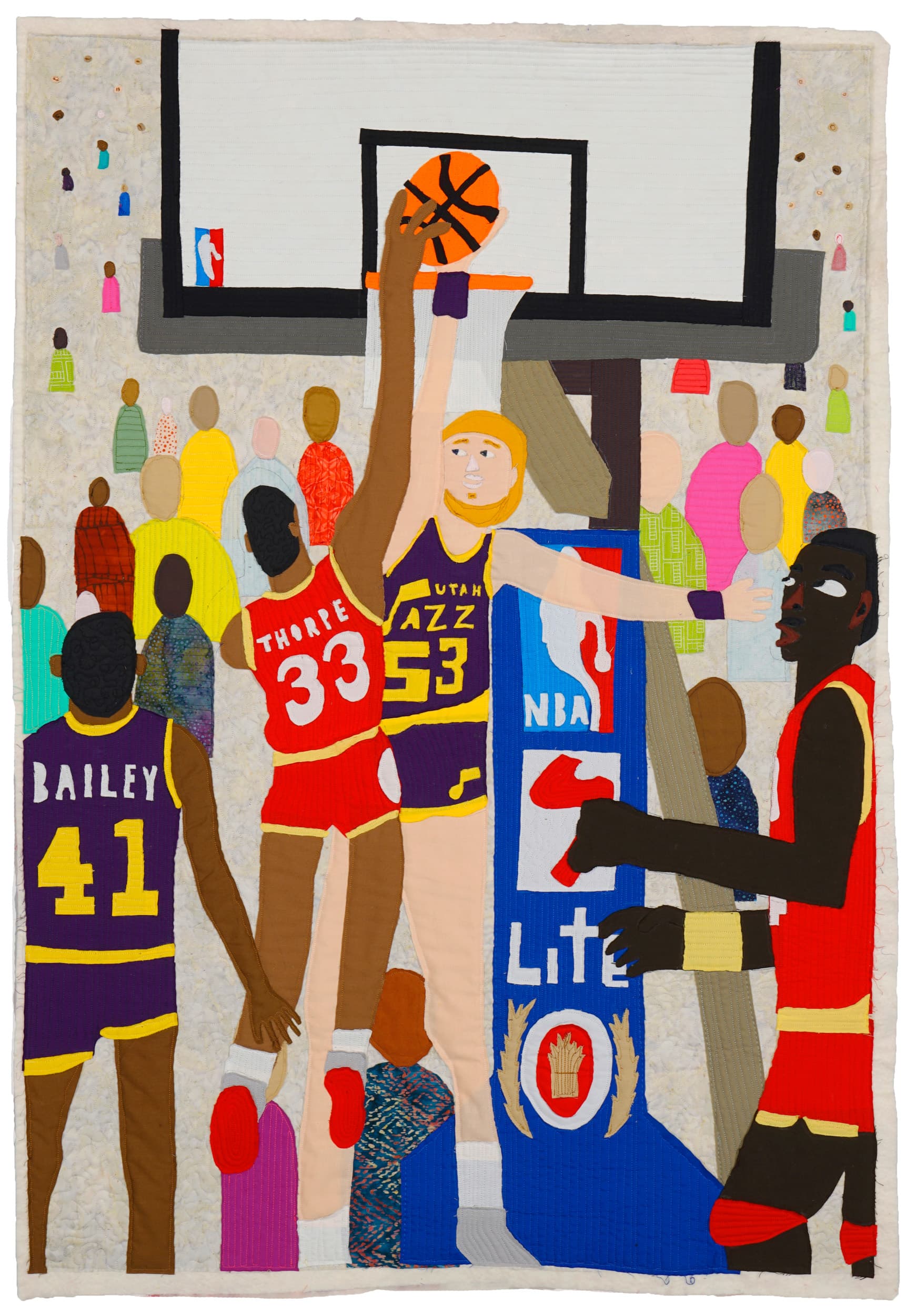
Michael C. Thorpe, Hoop Dreams, 2021. Fabric, quilting cotton and thread. 46.5 x 32.5 in (118.1 x 82.6 cm). Image courtesy of LaiSun Keane.
JJ: Zooming back out to some of the subject matter within this show, almost every piece here contains some element of a dream or fantasy. There’s a scene of Kyoto or yourself playing in the NBA, but there are also these poetic pieces made entirely of text. How do these fit in?
MCT: It’s funny how you grouped those pieces. It’s totally correct, but even the text pieces involve a dream. I think poetry was the first art form I was ever exposed to. The idea of being a poet is so cool to me—sitting in a coffee shop, jotting down words, getting in the flow. In visual art, I’ve always been driven toward text work, too. I love Richard Prince and Glenn Ligon, but Lorraine O’Grady is actually the one who recently re-energized me. She takes New York Times headlines and turns them into her own headlines. I’ve been really considering how to work with appropriation too, so her work really stuck with me. My text quilts are pulled from phrases I hear and see and then they’re quite literally quilted together. I think this is how I’m living out my dream of being a poet.
JJ: It sounds like you’re living the dream in more ways than just being a poet! What’s on the horizon? After a break of course…
MCT: Yes, a break is definitely my priority right now. After that, I’m going to be working on pieces for Art on Paper in September. Ultimately I want to push myself to be truly interdisciplinary. At my next show, I hope people will get to see my quilts, but also sculpture and video.
Michael C. Thorpe: Meandering Thoughts is on view at At LaiSun Keane, 460 Harrison Ave., through Saturday, May 29.
